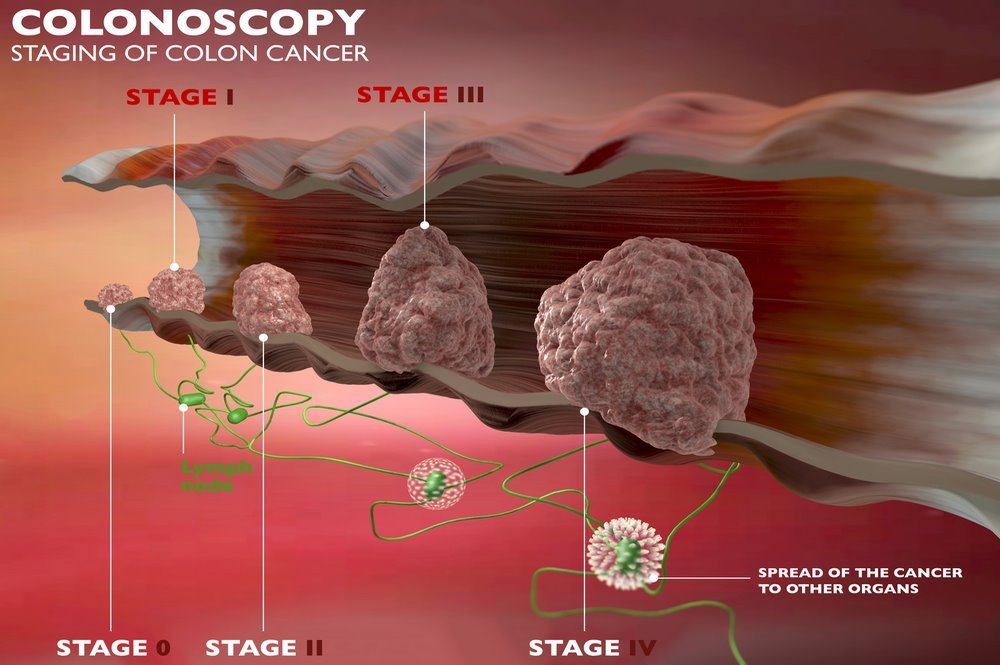How does the doctor determine the stages of cancer?

The diagnosis of any cancer remains incomplete without staging of the cancer. Roughly, staging of cancer is an indicator of its malignant potential; a measure of lethality of the tumor. More precisely, staging helps the doctors to map out an appropriate treatment plan. A widely used method to stage the cancer is TNM staging. Following diagnostic techniques aid the pathologist in staging the cancer:
- Flexible colonoscopy and sampling biopsy
- CT scans
- Magnetic Resonance Imaging
- Ultrasound
- Testing blood for tumor markers like carcinoembryonic antigen (CEA).
- Lymph node biopsy.
Biopsy of the sample taken from the suspected site of cancer, or the extracted lymph node involves histological study of the cells. This allows the pathologist to grade the cancer based upon the degree of abnormality of configuration of cells in architecture and appearance.
TNM Staging:
A tumor’s malignant potential is typified in this method. Here T stands for tumor extent and nature. Further differentiated into T is, T1, T2, T3, T4, it is a measure of how far the tumor cells have invaded the wall of the organ, in this case, colon.
The N stands for Nodes. With progression of cancer, the cancer cells start to invade a means of spread. The lymph nodes near the primary site become involved, as the lymphatics drain from the cancer site drain there. The involved lymph nodes appear swollen and palpable. Further differentiated into N0, N1, N2, it is a clear indicator of the number of lymph nodes involved, and degree of increase in size.
The M stands for Metastasis. It denotes the absence or presence of malignancy, that is, distant spread of cancer away from the primary site.
Stage 0:
This is a precancerous stage. The cells appear to be abnormal. However, they do not invade the layers of the wall of the colon and are limited to the top most layer. Consequently, there is no involvement of lymph nodes or any chance of metastasis. Hence, N0, M0.
Stage 1:
In this stage, the cancer cells start invading the layers of the colon. Besides the innermost layer, the second and third layer also become involved.
Stage 2:
This is a more invasive stage of cancer. It is characterized by a more widespread involvement of the layers of the colon walls. However, the cancer cells do not reach to other nearby organs. In this stage too, the cancer does not involve lymph nodes and there is no metastasis.
Stage 3:
This stage is characterized by cancer spread across the entire width of the colon wall. After the layers, the cancer may now involve the thin sheet of peritoneum lining the organs. From here, it may spread to other organs but has not yet followed that course. It is also characterized by the involvement of 3-7 nearby lymph nodes.
Stage 4:
This is the last stage of cancer. It is characterized by metastasis. The cancer cells invade some distant organ, other than colon. The lymph nodes present at this distant site may also get involved.
